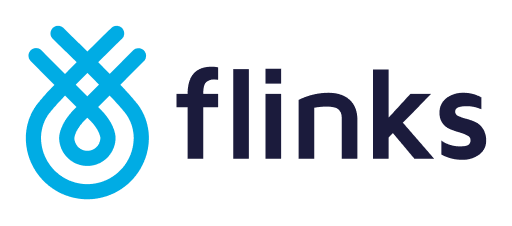When it comes to income verification, is payroll data the answer? Does it still make sense to comb through T4s and bank statements? Or is there another way?
The rise of alternative data has led to some profound changes in the ways lenders understand their customers’ credit profiles and underwrite loans. Being able to access highly accurate, up-to-date income and employment information is leading to incredible advancements in cash flow analysis, allowing greater certainty around borrowers’ actual ability to afford their loans.
As a result, many lenders are adding income verification in their risk assessment, or rethinking their current approach to move away from self-disclosure towards a truly data-driven process.
Here’s why it makes sense to verify your customers’ income as part of your credit risk assessment, and what to consider when choosing the best approach for your business.
Quick Links
The Benefits of Income Verification
So why do lenders choose to verify their customers’ income in the first place? Can’t they just use a credit score, or simply ask their customers directly?
Well, yes… but, there are constraints. Let’s unpack this.
It’s true that only a fraction of lenders face regulatory requirements to validate their borrowers’ employment status and income. They’re likely to ask their customers for T4s or pay slips that will be reviewed manually.
That being said, data connectivity services that collect income information directly from financial institutions or payroll providers are now widely available. And a growing number of lenders are discovering that it is in their best interest to do so. Here’s how they leverage this additional layer of information:
- They underwrite more loans without taking on more risk. This might seem counterintuitive at first, but the reality is that a risk model is never a perfect representation of the reality. Among applicants that don’t qualify based on their credit scores or other factors, there’s always a number who would in fact be able to afford their loans. Income data unlocks the ability to identify this segment of good borrowers that would otherwise go unseen—for instance, risk modeling using income data can help predict borrowers’ ability to repay based on patterns in their cash flow.
- They base their decisions on up-to-date information. Traditional credit scores offer a rear view perspective that falls short when borrowers’ finances change in real time. Income data catches important life events, like starting a new job or getting fired. Or, in the business financing space, income data enables SMB lenders to understand how their customers have been doing recently.
- They automate their processes using accurate, structured data. Lenders can now choose to collect their customers’ income data directly from financial institutions or payroll providers using a data connectivity provider. Not only does this solve the inaccuracies of self-reported income or fraud risks associated with sharing documents, it puts lenders in a better position to automate their income verification process.
- They ensure borrower success. Many lenders aspire to be their customers’ financial partners. A key part of their strategy is to help borrowers successfully pay back their loans. Income data enables them to establish dynamic repayment schedules that eliminate NSF fees.
3 Data-Driven Approaches to Income Verification
We routinely help lenders structure their income verification processes. Since there’s a variety of ways to verify a customer’s income, they must inevitably understand how each one works, and what they’re best suited for.
Payroll Data
How does it work?
Most employers rely on payroll providers to pay their employees. In the process, these payroll providers store large amounts of data about their income and employment status. There’s a growing market of aggregators that connect to major payroll providers. This intuitively feels like a straightforward approach: if you’re going to verify income, get your data directly at the source.
What are the pros?
- Payroll data goes deeper than income and employment status. It covers benefits, retirement contributions, actual hours worked, and other data points that can be useful if lenders know how to interpret them.
- Payroll connectivity has additional benefits beyond access to income data: it also makes it easier for lenders to get their money back. They can leverage the connection to the payroll platform to set up automatic deductions on their borrowers’ income.
What are the cons?
- Payroll data aggregation is relatively new for end users, and so far the conversion rates remain low. One culprit is the connectivity experience itself: in order to authorize access to their income data, borrowers must remember their user credentials for payroll platforms they rarely use, and share sensitive information such as their social security number.
- Not every employer uses a payroll provider, and not every payroll provider is supported by aggregators.
- The added friction and drop offs of payroll data connectivity can be a problem for lenders looking to make it as easy as possible for borrowers to share the information they need.
Bank Data
How does it work?
Financial data connectivity is a now common feature of digital lending. While most lenders use it for instant bank verification (IBV) purposes, it’s possible to verify borrowers’ income and employment based on their transaction statements.
What are the pros?
- Bank-sourced transaction statements provide a trustworthy, single source of truth on income and employment status, similar to payroll data.
- On top of this, transaction statements hold information you wouldn’t be able to get through payroll aggregation, such as non-employment sources of revenue (freelance work, income compensation allowances from the governments and insurers) as well as the existence of multiple employment income streams.
- If you’re currently using financial data connectivity for IBV, you already have access to bank data which eliminates the need to integrate another step in your onboarding process, or another tool in your workflows.
What are the cons?
- Raw transactional data can’t be used as is. Typically, this means that loan officers and risk analysts manually review the statements, is time consuming and limits the amount of relevant information they can extract.
Enriched Financial Data
How does it work?
Data enrichment is the process of transforming raw data into understandable, usable, and valuable information. For instance, instead of working with raw transactions, lenders receive data points that have already been categorized as income.
What are the pros?
- Data enrichment solves the inefficiencies of raw transactional data. It can eliminate the need for manual reviews and make it easier to automate decisioning processes.
- Data enrichment unlocks more use cases beyond income verification, such as fraud prevention, liability detection, and customer segmentation.
What are the cons?
- Not all enriched data is equally consumable. Transactions that have simply been categorized still require more processing before they can be used to verify a borrower’s income. This is why Flinks turns transactional data into actionable insights, and packages those insights into easy-to-read reports.
If you’re using more than one third-party provider to connect bank accounts and enrich data, then you know the challenges of working with multiple sets of categorized transactions. This is why Flinks Enrichment is built to layer on top of your existing data sources and provide a standardized output.




